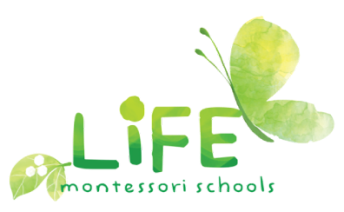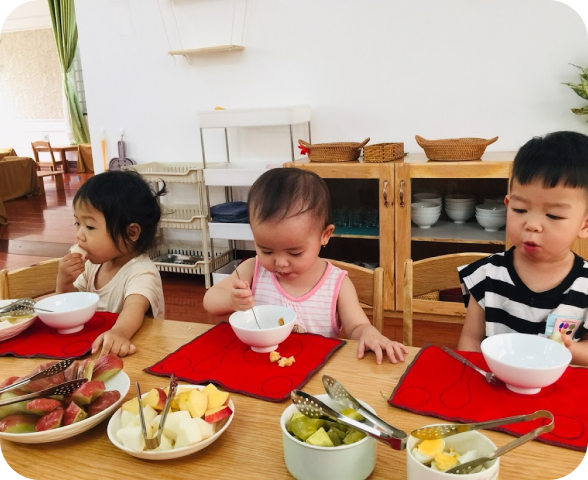
TAKE CARE OF YOURSELF
Help your child be independent in taking care of themselves. Build confidence, a good image of how your child sees himself “I can do it”.
- Dress and undress yourself.
- Put on and take off your own shoes, hats, and masks.
- Wash your hands, brush your teeth, comb your hair, wipe your mouth.
- Eat and drink yourself.
- Sleep by yourself.

CARE FOR THE ENVIRONMENT
Help your child move with his or her hands and large movements. Make your own choices in activities. Be inspired and passionate about your daily work.
- Sweep the house, mop the house;
- Prepare and clean your sleeping area;
- Carrying and storing items after going to the market;
- Clean toy shelves, clean glass windows;
- Clean tables and chairs, clean up after eating,…
- Put clothes in the washing machine, dry, fold and put in the closet,…
- Watering plants, planting trees, cutting yellow leaves, cleaning the yard,…
- Pet care: feeding, watering,…
Note: Activities are provided according to the child’s ability, adults are the main doers, children can do or observe or only participate in part of the work.
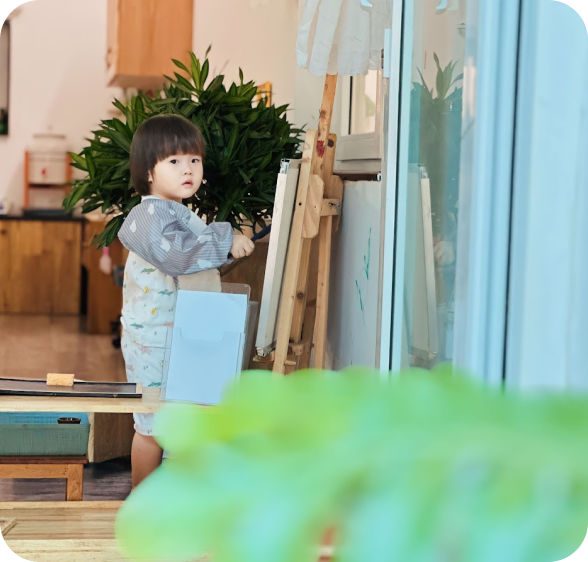
INDEPENDENT ACTIVITIES
Help your child move with his or her hands. Make your own choices in activities. Understand an activity cycle “take out items/toys to the child’s play corner, do activities with them, put them back in their original place after playing”.
- Toys available in the family;
- Activities of removing toothpicks, assembling, dropping blocks…
- Artistic activities: wax/watercolor painting, chalk drawing;
- Works with musical instruments like drums, trumpets, etc.
- Pasting/paper cutting activities;
- Activities of shaping clay and rolling dough to shape.
Note: when placing items/toys in your child’s play corner, only place a maximum of 6 sets, the rest should be stored in the cupboard and can be rotated weekly depending on your child’s ability and preferences. There are not too many details in a set, for example: wax colors are only 02 colors at a time.
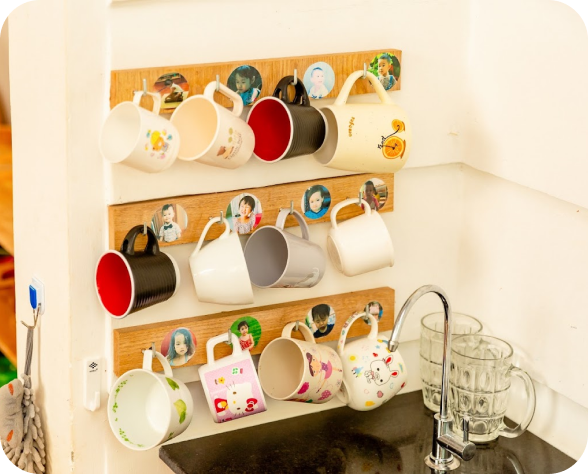
KITCHEN ACTIVITIES
Help your child move with his or her hands. Make your own choices in activities. Be inspired and passionate about this daily work.
- Prepare the dining table, clean up the dining table;
- Clean the dining table;
- Wash dishes, clean dishes, arrange dishes;
- Prepare food: chop vegetables, wash vegetables, peel eggs, cut soft fruits with a child-safe knife, mix salad, peel garlic, beat eggs…
Note: Activities are provided according to the child’s ability, the adult is the main person, the child can do or observe or only participate in part of the work.

LARGE ACTIVITIES AND OUTDOOR ACTIVITIES
- Children are always creative and make maximum efforts to achieve their motor skills.
- Sing songs with activities for your child to move along;
- Draw lines for children to jump in an open area with no surrounding objects;
- Children may want to carry heavy objects themselves such as laundry baskets, chairs, dishes, etc.
- If there is space outside, children can run, ride a balance bike, etc.
- Garden care: planting, watering, shoveling,…
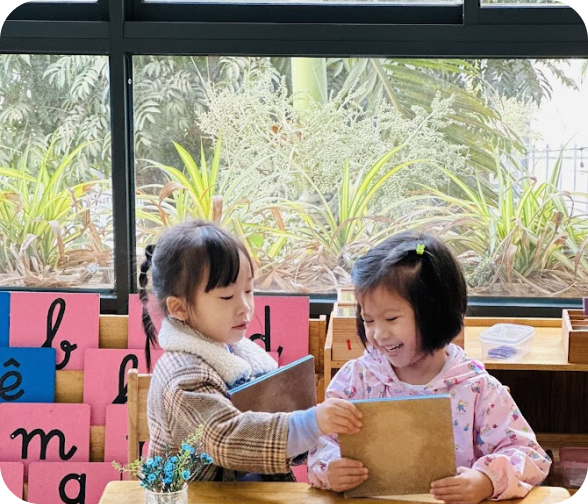
PROVIDING A LANGUAGE RICH ENVIRONMENT
- Provide vocabulary, help children use language to express themselves, express their wishes and feelings;
- Let your child know the names of the objects and animals they see in the house or places they come into contact with, the actions they and their parents do together, the emotions they are having;
For example: pick out spinach, let your child touch it and call the name “water spinach”,… or “I’m picking the spinach”, “you’re pulling it out”… or “I see you’re very angry and crying a lot”, “I feel It hurts when you do that”…
Read books, read poetry, rhymes, sing,…
Note: There should be impromptu conversations with your child, active communication with your child (with a listener and a speaker);
Adults communicate with each other in a sociable, quiet, and polite way, and children can learn that too.
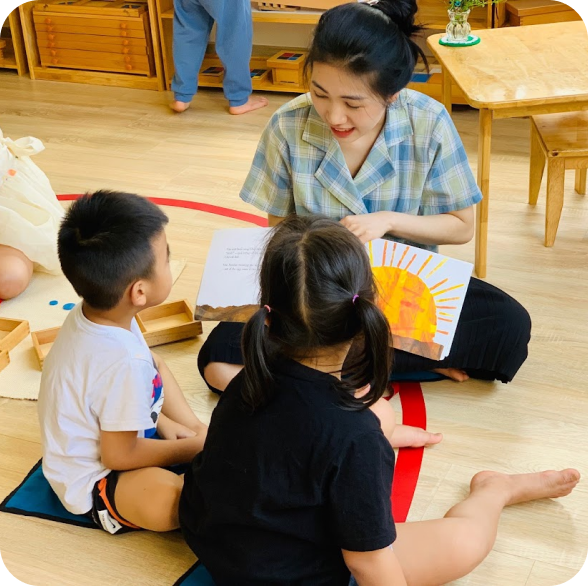
SUGGESTIONS FOR ADULTS
- Observe what activities your child is able to participate in so you can invite your child to do it together. For example: peel the egg shell when your child is able to use his fingertips to hold small objects. Or if your child still puts things in his mouth to explore, you should not let him participate in beating raw eggs;
- Invite your child briefly and cheerfully, giving them choices to attract their attention. For example: “come with me, I have something to show you”, “you want to get rid of this shirt”. Or put these pants in the machine”, “Do you want to draw or do you want to make clay”, “Let’s wash the vegetables”…
- To show your child how to do it without losing their interest, be brief and do it together, making eye contact with your child.
